
I’m convinced that the white house here, and the narrow, unnamed lane behind it are probably one of the oldest continually settled places in Brownhills or Walsall Wood. I think it was a farm, and a small community clearly grew around it as the area developed economically. Imagery from Bing! Maps.
For those who don’t follow the comments here, there was an interesting discussion last week after I featured a section of the Teasdale 1842 map from Clive Roberts’ new history site: The discussion that sprang up was about the nature and purpose of Friezland Lane in Shire Oak, and amongst the discussion was rom rather wild speculation by myself about the way the Parish borders run between Brownhills and Walsall Wood.
You can read the thread here.
I’ve had a great email from Hilary Little who has previously done so much for the blog; not only was she behind the David Evans exploration of the Royal Oak and Bullings Heath, but she’s done a huge amount on the Walsall Wood Inclosure Award – much of which I have yet to publish, but there’s a remarkable gallery of images of the document, all taken by Hillary here.
This is a wonderful explanation of how some of the roads in Walsall Wood and Shire Oak came to exist, and I thank Hillary for it. Fantastic stuff, as ever, which I’m honoured to share. Cheers.
If you have anything to add, please do: comment here BrownhillsBob at Googlemail dot com.

Teesdale 1842 map of Shire Oak: this sparked a fair old discussion last week. Click for a larger version. Image courtesy Clive Roberts.
Hillary wrote:
Hi Bob
I don’t know if this is interesting or not but The Inclosure award of 1871 for Walsall Wood does set out and describe the roads and footways of the area at the time. You will need to look at the maps to make any sense of this. [I’ve placed them in the text – Bob]
At this time, Lindon Road and Coppice Road together actually formed one Public Carriage Road or Highway named in the Inclosure act as Walsall Wood and Catshill Road and was described thus in the extract from the award documentation shown below:
And I do hereby declare that I have set out and appointed and do hereby set out and appoint the following Public Carriage Roads or Highways that is to say
One other Public Carriage Road or Highway, of the width of 30 feet to be called the Walsall Wood and Catshill Road commencing by a junction with the before mentioned Turnpike Road leading from Walsall to Lichfield at the before described point marked M on the said Map and extending thence in a northwesterly direction by the point marked P to the point marked Q and thence in a northerly direction by the points marked R, S, T and U to and terminating at a point marked V by a junction with an existing Public Carriage Road or Highway leading to Catshill at the Boundary between the Said Parish of Walsall and the said Parish of Shenstone.
(M is the old co-op corner in Walsall Wood and V is just short of Anchor Bridge where it meets the parish Boundary. )
The bottom half of Friezland Lane is also set out here and it runs up to the point where the current Commonside crosses over it at W and is called Catshill Lane Road…you can see the ‘existing road leading to Catshill’ on the map and it now forms the top half of Friezland Lane. This is the road from Chester Road to that Farmhouse we were discussing last week.
One other Public Carriage Road or Highway of the width of 30 feet to be called the Catshill Lane Road commencing by a junction with the last described Public Carriage Road or Highway called the Walsall Wood and Catshill Road at the before mentioned point marked S on the said map and extending thence in a northeasterly direction to and terminating at a point marked W by a junction with an existing Public Carriage Road or Highway leading to Catshill
Also the roads now known as Commonside and Occupation Road are set out a bit further on in the documentation which gives details of these and 29 other Private Carriage and Occupation Roads.
The Private Carriageway numbered xvi on the map encompasses what is now Occupation Road and the southern half of Commonside whereas the one numbered xvii is the Northern section of today’s Commonside.
You will notice from the text and the map that the Westerly edge of today’s Commonside has allotment numbers relating to the Walsall Wood inclosure marked in red in the following extracts and the Easterly sides the numbers A7, A14, A15, A21, A22, A24 and A28 relate to the Tithe Map of Shenstone.
And I further declare that I have set out and appointed and hereby set out and appoint the following Private Carriage and Occupation Roads that is to say….
One other Private Carriage and Occupation Road of the width of eighteen feet and numbered xvi on the said map commencing at the said point marked X in the before described Public Carriage Road or Highway called the Aldridge and Clayhanger Road (Now known as Brownhills Road) and extending thence in a northeasterly direction to the point marked Aw (now known as Occupation Road) and thence in a northerly direction to and terminating at the said point marked W on the before described Public Carriage Road or Highway called the Catshill Lane Road (now the bottom end of Friezland Lane) which said road is set out for the use of the owners and proprietors of the allotments numbered 88, 89, 87, 86, and the old Inclosures situate in the said Parish of Shenstone numbered A 24, A28, A22 and A21.
One other Private Carriage and Occupation Road of the width of twenty feet and numbered xvii on the said map commencing at the said point marked W in the before described Public Carriage Road or Highway called the Catshill Lane Road (Now known as Friezland Lane) and extending thence in a northerly direction to the point marked Ah and terminating at the said point marked V on the before described Public Carriage Road or Highway called the Walsall Wood and Catshill Road (now Lindon Road) which said road is set out for the use of the persons interested for the time being in the Allotments numbered 78, 77, 76, 75, 74,73,72, 71, and the old Inclosures situate in the said Parish of Shenstone numbered A15, A14 and A7.
Of course, all of this does not prove which came first the Parish Boundary or the road but it does show that they ran along the same course at this point.






 RSS - Posts
RSS - Posts

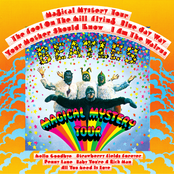
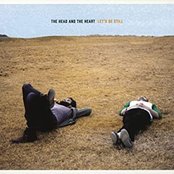

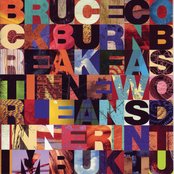
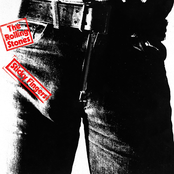
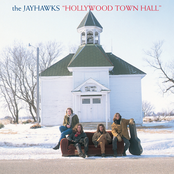



Hi Bob
what a wonderful start to the week! Many thanks to Hilary.
Commonside, and its origins, have certainly interested three local authors. See;- Gerald Reece’s book, and especially his latest lecture; Sid Pritchard’s/ Bill Mayo’s book; and Clive Robert’s latest excellent exploration. Perhaps the cottage may hold part of the answer…but may I suggest possibly going further back to medieval droving times, too..if not to pre-history even.
Here we go!
Thanks to all
kind regards
David
.
You have done a lovely piece of detetive work Hilary. Thank you
Thank you. Have you spotted on the map above…a certain Joseph Tubey…..could he actually be the Joseph Toovey you mention in your book? A Victorian spelling mistake perhaps.
Brilliant reads by the way…..even found some more evidence re the location of Pepper Alley.
Regards
Hilary
Hello Hilary. Thank you for the kind words on my book. I got the name Toovey from a legal document, so i would hope that is the right spelllng. Sorting out this local history is good fun, well there`s nowt on the telly!
I was thinking maybe the guy who drew the map up was perhaps a little hard of hearing or possibly a bit forgetful. The map itself is huge, 7ft long by over 3ft wide….I could imagine him, perched over the table, with his pen and trying in his best handwriting…..”what was that name again?”………botheration!
Fascinating work, many a long hour spent trying to decipher the original map I guess?
I used to live up at Collins Road, whilst we called it Shire Oak I never really thought we were either Brownhills or Walsall Wood, in fact I wasn’t sure where we were!
Thanks Hilary, Bob mentioned he had some more from you yet to come, I look forward to it.
If you have any more clues as to the location of Pepper Alley please let us have them, the location of Pepper Alley was never really concluded………
Thanks again Hilary
Peter
Hi Peter
Thanks for the kind words
Not so much conclusive evidence as more another bit in the jigsaw in relation to Pepper Alley/Lane. On Clive’s web site there is a newspaper article relating to Joseph Cresswell getting a bit” worse for wear” in 1887. The article has his address as Pepper Lane. In the 1881 census, there is a Joseph, aged 23, living with his mum and dad in the house (that appears to be) next door to the Royal Oak. The census records this as Bullings Heath By 1891, only his 3 younger siblings still live at home. However, the deeds to the whole site of the Royal Oak, also mention Matthew Cresswell (his Dad, presumably, but he does have a brother called Matthew too) as living in one of three houses on the site in 1893.
Just to add a bit of spice…..just noticed a fairly recent comment from Joan on the “Pepper Ground” article dated Feb 15. In it she confirms that the driveway to her grandparents house was locally known Pepper Alley despite its postal address of 151 Hall Lane.
Thank you, Joan.
Hi Bob
I wonder if it is possible to view the original Teesdale 1842 map. ? Is it available to the public?
Morning Peter, old fruit,
Shire Oak? Well, one of the early Walsall Wood census showed it beginning, or being listed, at the junction of Lichfield Road and Coppice Road, Walsall Wood,, just by the village church!, Lately the new 30 mph speed restriction along A452 Chester Road, near the bluebell wood, welcomes travellers to Shire Oak where it used to read Brownhills. Shire Oak Inn , according to one pub sign, is in Walsall.
Perhaps our MEP could give a clear answer!
Good fun, thanks again to Clive and Hilary
kind regards
David,
HI bob I dont know if its of any interest but when I was fourteen and worked at the old chasetown electricity company one job i remember was helping to paint street light standards up the cutting at walsall wood it whent from streets corner to the lights at shire oaks hill why do I remember i spilled green paint over ALBERT HEATHS byke he was not amused he ha just returned from the forces and a new bike was posh in them days
I’ve looked in the Lichfield Mercury and there is no mention of any spilt green paint.
…A funeral took place at Hammerwich in 1944, and representing the Chasetown and District Electricity Company was represented by a Mr Frank H Beacon.
Mr B Cowlishaw, Electrical Enginneer, said that lighting had been installed in many places.(Aug 1940 concerning lighting on junctions, Burntwood Council meeting)
April 1940….Mr Cowlishaw explained that three lamps had been installed as requested by the Clerk. One had been placed in Burntwood and the others at Cannock Road, Chase Terrace. Of very low intensity the lamps were only valuble on a black night…he said they were defineately an advantage on dark nights, and many towns were adopting them.
Thanks pedro dear old frank he was the engineer oliver cowlishaw was chief enginere we only had one car in those days a hillman a registeration AUT 15 we would fly when we saw it comming the other form of transport a byke meters ladders tools the lot even the mens wages the office was at chasetown we worked at a sub station in brownhills on fridays the youngest lad would byke to chasetown pick up a brown envelope and byke back to brownhills with the wages security core eat your heart out happy days dear old frank always peeled an apple sadly he had a skin condition and apples and nuts were a diet in my mind I can see him when problems arose standing by oliver no panic or flap gently sorting it out peeling an apple a very patient gentleman
HI pedro re the street lighting 6o watts side street 100 watts main road examined by byke at night broken ones replaced next day on byke two regular used for target practice by little darlings was snapes wood and jockey styles some lamps were opperated by hand wound clocks each or so wound up from the cross bar of your byke and a key and pair of pliers health and saferty eat your heart out
My 2 X Great Uncle William Sidney Smith came from Oxford and was Toll Collector in Brownhills 1851 Census. With his wife Mary. Can anyone shed any light on them. Think he died in 1853.
Yes! At least one mention of the William Sidney Smith, the toll collector.
1847 giving evidence at the Staffs Summer sessions. I will send a copy to Bob to forward.